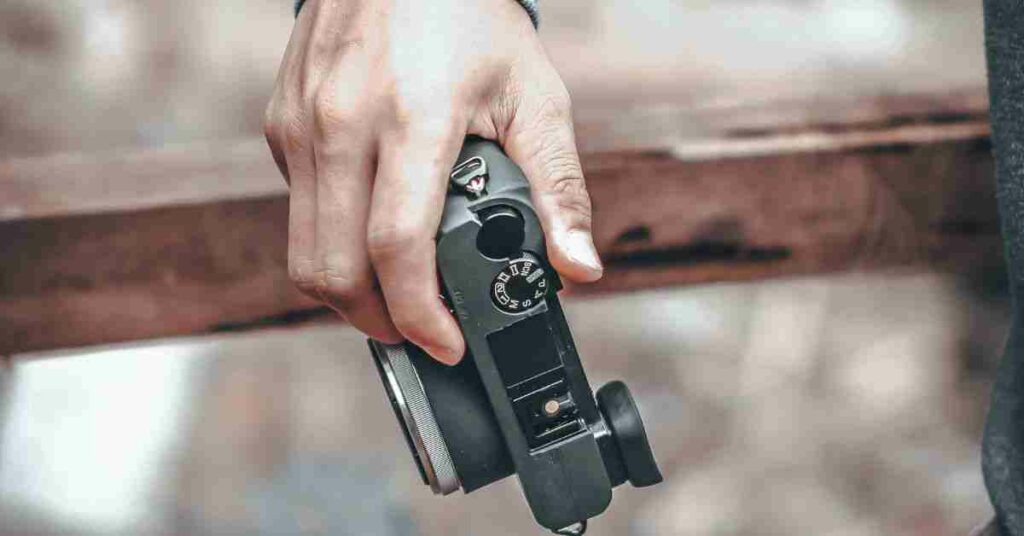In the constantly evolving realm of photography, the pursuit of the ideal camera is an expedition that every passionate individual, expert, and imaginative adventurer undertakes. Central to this chase is a longing for the best mirrorless camera, a device that surpasses conventional limitations, seamlessly merging state-of-the-art innovation with artistic perspective. In this comprehensive guide, we delve deep into the realm of mirrorless cameras, shedding light on their key features and helping you uncover the ideal choice to elevate your photographic endeavors.
Mirrorless cameras have revolutionized the photography landscape, offering a dynamic alternative to conventional DSLRs. They owe their name to the absence of the mirror mechanism found in traditional cameras, resulting in a more compact and lightweight design. The best mirrorless cameras are celebrated for their versatility, striking a harmonious balance between high-quality still photography and impressive video capabilities.
Top 10 Best Mirrorless Cameras Of 2024
| 1 | Sony A7 IV: Best Overall |
| 2 | Canon EOS R50: Best Budget Mirrorless Camera |
| 3 | Sony ZV-E1: Best Mirrorless Camera For Vloggers |
| 4 | Nikon Z6 II: Best Mirrorless Nikon Camera |
| 5 | Olympus OM-D E-M10 Mark IV: Best Entry-Level Mirrorless Camera |
| 6 | Canon EOS R5: Best Professional Mirrorless Camera |
| 7 | Fujifilm X-H2S: Best Mirrorless Camera for Action |
| 8 | Panasonic Lumix GH6: Best Mirrorless for Professional Videos |
| 9 | Nikon Z5: Best Cheap Full-frame Mirrorless Camera |
| 10 | Sony A1: Sony’s Best Flagship Mirrorless Camera |
Best Mirrorless Camera – Reviews
1. Sony A7 IV
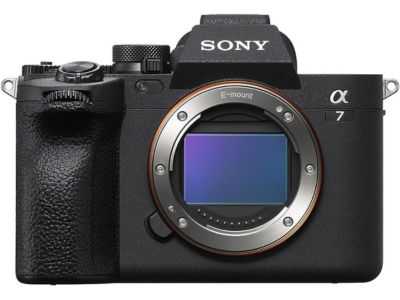
Specifications
- Type: Mirrorless
- Sensor: Full Frame (35mm)
- Megapixels: 33 MP
- Lens Mount: Sony E
- Monitor: 3.0″ Free-Angle Tilting Touchscreen LCD, 1,036,800 Dots
- Viewfinder: OLED EVF, 3,680k dots, 100% coverage, 0.78x magnification
- Max continuous shooting speed: 10fps
- Max video resolution: 4K
Pros
- Higher Resolution
- Improved Autofocus
- Great stabilization
Cons
- More Expensive than its Predecessor
The Sony α7 IV is an upgraded version of the Sony α7 III. It represents a remarkable fusion of photographic capabilities, seamlessly blending a high-resolution 33MP still image capability with the ability to record videos in stunning 4K at 60 frames per second. Designed to cater to the needs of both photographers and filmmakers, this camera goes beyond the ordinary by incorporating features tailored for live streaming and real-time content sharing.
When it comes to image quality and overall performance, the Sony α7 IV truly shines, setting a new standard for photography enthusiasts and seasoned professionals alike. Its advanced and speedy autofocus system, coupled with its 4K video shooting capabilities, positions it as the best mirrorless camera for photographers with demanding requirements. Notably, the Auto Focus system represents a significant improvement over its predecessor, the A7 III, and the camera’s ergonomic design enhances the overall user experience. Beginners will appreciate the revamped menu setup, making navigation more user-friendly.
One notable enhancement compared to the Sony Alpha A7 III is the vastly improved menu system, which is now notably more user-friendly and functional. Despite the increase in pixel count to 33MP from the A7III’s 24MP, the α7 IV maintains excellent high ISO noise performance. Furthermore, it boasts weather sealing for added durability, rapid burst shooting capabilities, and an AI-powered eye-tracking autofocus system that elevates its performance to another level.
The Sony α7 IV undeniably stands out as the premier choice among full-frame mirrorless cameras, offering exceptional value for your investment, provided you are willing to make this level of commitment. It’s important to note, however, that for most individuals, such a high-end camera may exceed their needs.
2. Canon EOS R50
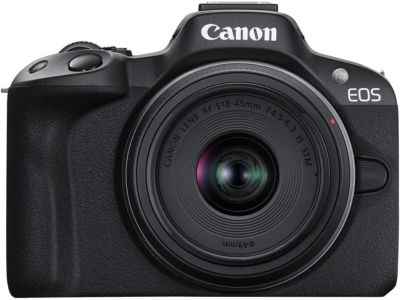
Specifications
- Type: Mirrorless
- Sensor: APS-C Sensor
- Megapixels: 24.2 MP
- Lens Mount: Canon RF
- Monitor: 3.0″ Articulating Touchscreen LCD, 1620k Dots
- Viewfinder: OLED EVF, 2360k dots, 100% coverage, 0.96x magnification
- Max continuous shooting speed: 15 fps
- Max video resolution: 4K
Pros
- Compact Design
- Excellent Autofocus
- Great Value for Money
- Amazing Videos
Cons
- Struggle a bit in low-light
The EOS R50 occupies a position as Canon’s second most affordable camera in the RF-mount lineup, positioned higher than the EOS R100 but below the EOS R10 in terms of pricing. It empowers you to capture your envisioned moments precisely as you picture them, all within a compact and lightweight design. Through its intuitive photo features, the camera effortlessly produces exquisite images, transforming photography into an enjoyable, uncomplicated, and convenient endeavor.
The standout feature of the EOS R50 is its autofocus. It has an impressive array of subject recognition modes and a robust tracking capability. In numerous scenarios, especially when photographing individuals, you have the flexibility to manually select the focus point, and the camera will diligently track the designated subject or object with precision. Significantly, the Canon EOS R50 stands out in terms of its video abilities, providing characteristics like 6K oversampled 4K video capture at a rate of 30 frames per second and the advanced Dual Pixel CMOS AF II. This makes it a particularly appropriate selection for both cinematic films and vlogging. With its intuitive interface reminiscent of a mobile phone and smooth connectivity options, it acts as an exceptional beginner-level camera for aspiring photographers and videographers.
The inclusion of the RF-S18-45mm F4.5-6.3 IS STM lens enhances versatility without occupying excessive space within your camera bag. Additionally, the camera’s rapid shooting capabilities, reaching up to 12 frames per second with Electronic First Curtain shutter mode and up to 15 frames per second with Electronic Shutter mode, ensure you never miss those crucial moments.
Furthermore, the Canon EOS R50 camera allows uninterrupted video recording for up to one hour, offering the convenience of setting up your video projects, be it vlogs, podcasts, or other creative endeavors, without concerns about unexpected interruptions. In essence, the EOS R50 camera redefines photography, rendering it a delightful, straightforward, and hassle-free experience with its instinctive photo functions that faithfully bring your creative visions to life.
Also check: Best Mirrorless Camera Under $1000
3. Sony ZV-E1
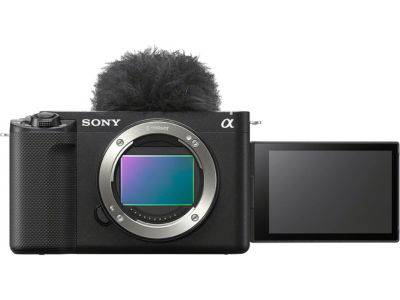
Specifications
- Type: Mirrorless
- Sensor: Full-Frame
- Megapixels: 12.9 MP
- Lens Mount: Sony E
- Monitor: 3.0″ Articulating Touchscreen LCD, 1,036k Dots
- Max continuous shooting speed: 10 fps
- Max video resolution: UHD 4K
Pros
- Full-Frame Compact Camera
- Outstanding Video Quality
- Incredible color gamut and capture
- Long battery life
Cons
- Only Uses SD card
Another best mirrorless camera on our list is the Sony ZV-E1. The ZV-E1 showcases the same 12MP sensor as in the a7S III and FX3. These two cameras are known for their superior video capabilities. However, the ZV-E1 presents a few distinctive functionalities absent in the A7S III, which is rather unexpected.
Although the sensor stays unchanged, the ZV-E1 deviates from Sony’s usual mirrorless design seen in the A7 models, instead opting for a smaller and sturdier body similar to either an A6700 or a full-frame A7C. In reality, it is significantly more diminutive and lighter, weighing merely 483g, thus establishing itself as Sony’s most compact full-frame camera created up until now.
What truly distinguishes the ZV-E1 from Sony’s existing camera lineup are its automated modes, many of which leverage the company’s subject-recognition systems. These modes are designed to simplify video production, particularly for individuals who are shooting and presenting content on their own. The distinctive features of the ZV-E1, along with its excellent image sensor and small size, make it an exceptional choice for vloggers. These specialized modes for vlogging utilize Sony’s advanced systems for recognizing subjects, making the vlogging process more straightforward and efficient. These modes are tailored to cater to the particular requirements of vloggers, guaranteeing that they can effortlessly produce captivating and polished content.
Thanks to this sensor, the ZV-E1 can deliver UHD 4K video at up to 60p without any cropping. It achieves this by extracting footage from a 4.2K pixel region, ensuring that there is no loss of quality when cropping is applied. Furthermore, the ZV-E1 excels in low light conditions, boasting dual native ISOs at 640 and an impressive 12,800. This allows for remarkably low-noise video even at ISO 25,600, and it maintains manageable noise levels even at 51,200, enabling shooting under moonlight or candlelight with exceptional results.
Check: Best Mirrorless Camera For Video
4. Nikon Z6 II
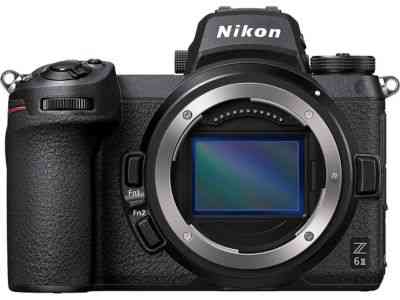
Specifications
- Type: Mirrorless
- Sensor: Full-Frame
- Megapixels: 25.28 MP
- Lens Mount: Nikon Z
- Monitor: 3.2″Tilting Touchscreen LCD, 2100k Dots
- Viewfinder: OLED EVF, 3,690k dots, 100% coverage, 0.8x magnification
- Max continuous shooting speed: 14 fps
- Max video resolution: UHD 4K
Pros
- Amazing Autofocus System
- Excellent Dynamic Range
- Excellent image quality
Cons
- Battery life needs improvement
The arrival of the Nikon Z6 II represents a notable and praiseworthy enhancement compared to its predecessor, the Nikon Z6. Nikon unveiled the Z6 II in October 2020. Although the external design of the two cameras appears almost identical, the majority of the advancements in the Z6 II derive from both hardware improvements and firmware upgrades.
Foremost, the Z6 II boasts the inclusion of two EXPEED 6 processors, a pivotal enhancement that elevates various aspects of the camera’s performance, encompassing the buffer capacity, autofocus system, and continuous shooting speed. Notably, the Z6 II can now achieve a shooting rate of up to 14 frames per second, a slight improvement over the Z6’s 12 frames per second, but the real leap lies in the substantially expanded buffer capacity.
Significant strides have also been made in the autofocus department. The Z6 II exhibits an impressive low-light sensitivity range, spanning from -4.5 to 19 EV, which is a one-stop improvement over its predecessor. This advancement ensures greater accuracy when focusing on challenging low-light conditions. Furthermore, the Z6 II introduces two new autofocus features: the ability to perform Eye autofocus in Wide Area AF mode and during video recording, enhancing its versatility.
Navigating the camera’s menus is a straightforward and customizable experience. The deep grip contributes to comfortable and ergonomic handling, with intuitively placed buttons that align with Nikon’s reputation for user-friendly design. The Z6 II excels in image quality, delivering an exceptional dynamic range suitable for capturing intricate details in high-contrast landscape photography. Its robust build quality, coupled with weather sealing, enhances its reliability for shooting in adverse weather conditions.
However, it’s worth noting that the Z6 II is not the most portable option, which may prove less convenient for extended hikes or remote shooting excursions where portability is paramount.
Also check: Best Mirrorless Camera For Travel Photography
5. Olympus OM-D E-M10 Mark IV
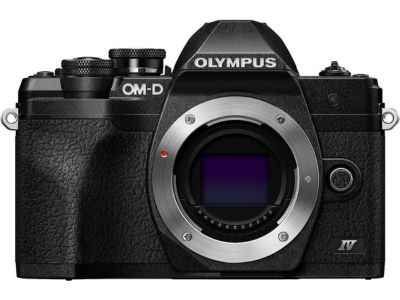
Specifications
- Type: Mirrorless
- Sensor: Micro Four Thirds
- Megapixels: 20.3 MP
- Lens Mount: Micro Four Thirds
- Monitor: 3.0″Tilting Touchscreen LCD, 1040k Dots
- Viewfinder: OLED EVF, 2,360k dots, 100% coverage, 0.62x magnification
- Max continuous shooting speed: 15 fps
- Max video resolution: UHD 4K
Pros
- Lightweight and Portable Design
- Improved Autofocus System
- Easy to Use
Cons
- Lacks mic port
The Olympus OM-D E-M10 Mark IV acts as the successor to the E-M10 III digital camera, which first debuted in 2017. Although the design remains the same, the E M10 Mark IV is more compact and lighter.
Prominent characteristics of this camera encompass its 20-megapixel micro-four thirds sensor that existed in the more expensive Olympus E-M5 Mark III. It boasts a significant improvement in continuous shooting speed, now capable of reaching 15 frames per second. Additionally, the camera offers enhanced continuous focusing on moving subjects and introduces the Face Priority/Eye Priority AF mode, which intelligently focuses on faces, even in profile or when looking downwards. For selfie enthusiasts, a convenient flip-down LCD monitor has been added. Furthermore, the camera’s ergonomics have been refined with an improved hand grip, and it incorporates a 5-axis image stabilization system providing an equivalent of 4.5 stops of shutter speed stabilization. The convenience of USB battery charging is also part of its repertoire.
An interesting addition is the incorporation of eye and face detection algorithms from the flagship E-M1 Mark III, extending their functionality across a wider range of angles compared to previous iterations. Olympus has also introduced a new Live View Boost mode that significantly aids in low-light conditions, enhancing both focusing and framing. Unlike its predecessor, the E-M10 IV’s Live View Boost function not only boosts viewfinder gain but can optionally reduce the frame rate to achieve a markedly brighter viewfinder image, albeit with some trade-off in smoothness.
The Olympus OM-D E-M10 Mark IV maintains its reputation as a great choice for new photographers and videographers in the domain of mirrorless cameras. Its lightweight structure, easy-to-use interface, and the ability to capture crisp and lively images through its Four Thirds sensor render it an attractive choice for individuals embarking on their photographic expedition.
Also check: Best Mirrorless Camera For Beginners
6. Canon EOS R5
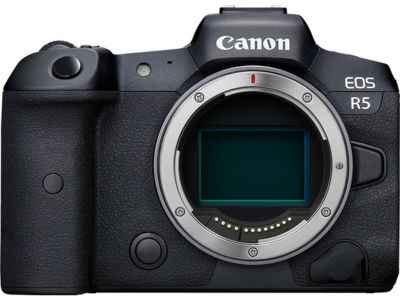
Specifications
- Type: Mirrorless
- Sensor: Full-Frame Sensor
- Megapixels: 47.1 MP
- Lens Mount: Canon RF
- Monitor: 3.2″Free-Angle Tilting Touchscreen LCD, 2100k Dots
- Viewfinder: OLED EVF, 5760k dots, 100% coverage, 0.76x magnification
- Max continuous shooting speed: 12 fps
- Max video resolution: 8K
Pros
- 8K Video Recordings
- Excellent focus tracking
- Durable
Cons
- Overheating at 8k
Although it doesn’t directly succeed any of Canon’s previous mirrorless cameras, the Canon EOS R5 introduces significant enhancements and advantages over the EOS R. These improvements include a new DIGIC X processor and sensor, the capability to shoot 8K video, a revamped autofocus system, and the capacity to record videos with 10-bit color depth. In essence, the Canon EOS R5 establishes itself as a powerhouse across various aspects. Its 8K video recording capabilities surpass those of many leading cinema cameras, its rapid shooting speed places it in league with top sports cameras, and its 45MP sensor surpasses the majority of high-end mirrorless options. Additionally, its 8-stop in-body image stabilization sets a new standard for IBIS performance.
Taking a closer look at the R5’s specifications, it becomes evident that nearly every aspect remains a compelling selling point. The autofocus system, when paired with image stabilization, ranks among the swiftest systems available. Its tracking capabilities excel, particularly in face, eye, and head detection, making it exceptionally well-suited for portrait, sports, or action photography. Continuous focus mode consistently maintains sharpness on subjects or individuals, even in dynamic scenarios.
While it does present a relatively bulkier appearance and a substantial heft when held, it’s worth noting that compared to older DSLRs like the 5D, it offers a significantly more manageable handling experience. In contrast to non-mirrorless cameras, it is notably lighter, yet it may feel slightly less rugged and shock-resistant compared to older setups.
You may like: Best Mirrorless Camera For Professionals
7. Fujifilm X-H2S
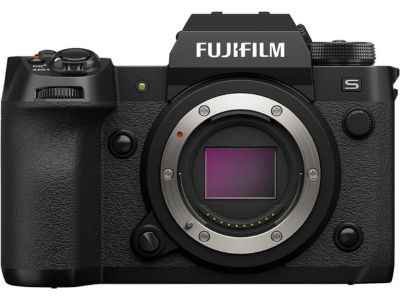
Specifications
- Type: Mirrorless
- Sensor: APS-C Sensor
- Megapixels: 26.16 MP
- Lens Mount: FUJIFILM X
- Monitor: 3.0″Free-Angle Tilting Touchscreen LCD, 1620k Dots
- Viewfinder: OLED EVF, 5760k dots, 100% coverage, 0.8x magnification
- Max continuous shooting speed: 15 fps
- Max video resolution: UHD 4K
Pros
- Great Resolution
- Electronic Viewfinder
- Built-in image stabilization
- Very Fast Burst Speed
Cons
- Average focus in video recording
The Fujifilm X-H2S is the successor of the X-H1. Among the Fujifilm APS-C camera range, it positions itself as one of the two leading choices. Just like its counterpart, the Fujifilm X-H2, this camera showcases a sturdy build and a prolonged battery lifespan. Nevertheless, rather than utilizing a 40-megapixel sensor, it selects a 26-megapixel sensor developed with a stacked setup, providing swifter readout speeds and reducing the rolling shutter impact. However, the X-H1 has a 24 MP sensor. Staying true to its “S” designation, which signifies speed, this camera is the go-to choice for videography and capturing fast-moving subjects. It features advanced video capabilities, recording capabilities of up to 6.2k, in-body image stabilization (IBIS), and a blackout-free burst shooting mode that can reach up to 40 frames per second.
Fujifilm cameras have garnered a reputation for their prowess in still photography autofocus. However, its autofocus system for video isn’t as widely acclaimed. While the autofocus functionality performs adequately in testing, it doesn’t stand out as exceptional. It does offer focus tracking, primarily limited to faces and a few predefined subjects such as animals, birds, automobiles, motorcycles, bikes, airplanes, and trains. For subjects outside these categories, the camera allows users to manually instruct it to maintain focus.
One noteworthy feature of this camera is its built-in 5-axis sensor-shift image stabilization, a valuable inclusion, particularly in this price range. Many higher-end cinema cameras lack this in-body stabilization feature. Consequently, this enhances the experience of shooting handheld with the Fujifilm X-H2S. Additionally, the camera excels in delivering impressive image quality, boasting over 14 stops of dynamic range, resulting in exceptionally clean and detailed images.
8. Panasonic Lumix GH6
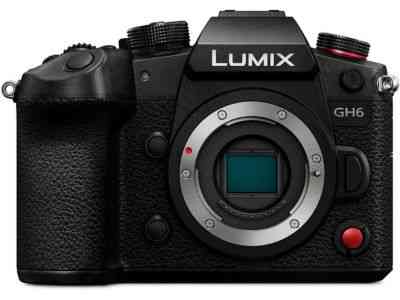
Specifications
- Type: Mirrorless
- Sensor: (Four Thirds) MOS
- Megapixels: 25.2 MP
- Lens Mount: Micro Four Thirds
- Monitor: 3.0″Free-Angle Tilting Touchscreen LCD, 1840k Dots
- Viewfinder: OLED EVF, 3680k dots, 100% coverage, 0.76x magnification
- Max continuous shooting speed: 14 fps
- Max video resolution: UHD 4K
Pros
- Dedicated Audio Button
- Improved Auto Focus
- Simple Menu System
Cons
- Battery life could be improved
The Panasonic Lumix GH6 embodies the subsequent advancement in Panasonic Lumix’s highly esteemed GH5 and GH5 II cameras. Positioned as a top-notch Micro Four Thirds mirrorless camera, it arrives brimming with a captivating assortment of capabilities. Much like its predecessors, the GH6 positions itself as a camera tailored for video enthusiasts while still excelling in still photography. In terms of physicality, the GH6 is noticeably larger for a Micro Four Thirds camera, with a body weight of 823g. Familiarity with the Panasonic Lumix series will reveal that most of the buttons and controls remain in their usual positions, albeit with a few exceptions. Notable additions include a switch for a user-defined control lock on the top left and a dedicated autofocus button facilitating adjustments to AF areas and eye detection.
This camera is particularly well-suited for vloggers and digital content creators. A second video record button has been added to the front of the camera, enhancing convenience. Furthermore, a dedicated audio control button enables users to modify audio levels and quality seamlessly, eliminating the need to navigate through menus.
The GH6 boasts an extensive range of 4K-focused video modes, encompassing features like slow-motion at 120 fps, full-sensor ‘open gate’ shooting, and support for industry-standard formats such as ProRes 422 and 422HQ. Panasonic has further improved its already top-tier in-body image stabilization, providing 5-axis stability. When coupled with a compatible Panasonic O.I.S. lens, the GH6 achieves an impressive 7.5-stop Dual I.S., enhancing its steadiness. This advancement also enables handheld shooting in high-resolution mode, allowing for the capture of 50.5MP and 100MP stills by rapidly shifting the sensor and utilizing AI to create clear images from the stacked exposures.
9. Nikon Z5
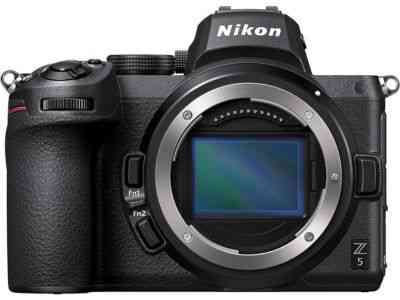
Specifications
- Type: Mirrorless
- Sensor: Full-Frame CMOS
- Megapixels: 24.3 MP
- Lens Mount: Nikon Z
- Monitor: 3.2″ Tilting Touchscreen LCD, 1040k Dots
- Viewfinder: OLED EVF, 3690k dots, 100% coverage, 0.8x magnification
- Max continuous shooting speed: 29.97fps
- Max video resolution: UHD 4K
Pros
- Amazing stills
- Weather-Sealing
- 4K Recording
Cons
- Poor Autofocus
The Nikon Z5 is an introductory-level 35mm full-frame mirrorless camera equipped with 4K video recording capability and in-body image stabilization (IBIS). It holds a position beneath the more feature-rich and higher-priced Z6 and Z7 models within the Nikon Z-series lineup.
Key attributes of the Z5 encompass a 24.3-megapixel CMOS sensor, an ISO range spanning from 100 to 51,200, a Hybrid AF system consisting of 273 focus points with eye and animal detection capabilities, a 3,690k-dot electronic viewfinder, a tilting touchscreen display, a weather-resistant magnesium alloy body construction, dual UHS-II SD card slots, and integrated Wi-Fi and Bluetooth connectivity. With its 24.3-megapixel resolution and 4K video recording capability, the Z5 aligns with contemporary expectations for essential specifications. Notably, it boasts comprehensive weather sealing, safeguarding against moisture and dust—a valuable addition, considering that many entry-level DSLR cameras lack such protection. This enhanced durability, along with the ability to charge the camera via a USB power bank, ensures the Z5’s resilience in diverse shooting environments.
The camera offers user-friendly operation, featuring a rear touchscreen that tilts for convenient live-view composition when capturing shots at challenging angles. Its five-stop, five-axis in-body image stabilization empowers photographers to capture stills in low-light conditions or with narrow apertures, minimizing the risk of camera shake-induced blur. Furthermore, this robust IBIS system enhances the stability of handheld video recording, obviating the need for a camera rig under certain circumstances. Despite these capabilities, it maintains an ISO range of 100 – 51,200, expandable to 50 – 102,400 for low-light photography.
You may want to check: Best Mirrorless Camera Under $500
10. Sony A1

Specifications
- Type: Mirrorless
- Sensor: Full-Frame Stacked CMOS
- Megapixels: 50.1 MP
- Lens Mount: Sony E
- Monitor: 3.0″ Tilting Touchscreen LCD, 1040k Dots
- Viewfinder: OLED EVF, 9437.1k dots, 100% coverage, 0.9x magnification
- Max continuous shooting speed: 29.97fps
- Max video resolution: UHD 8K
Pros
- Excellent Stills
- Super Fast Burst Shooting
- 8K Recording
Cons
- Complicated Menu
The Sony a1 stands as a top-tier camera, versatile enough to excel in various photographic domains, including high-resolution landscape photography, demanding sports and wildlife capturing, and professional video recording.
In terms of image quality, the A1 unquestionably delivers. Equipped with a 50.1MP stacked CMOS sensor, it exhibits an extraordinary capacity to capture intricate details, making it a compelling choice even for studio photographers with discerning requirements.
It’s quite remarkable to consider that the Sony A1 can capture raw still images at an impressive 30 frames per second (FPS). This eliminates the need for the traditional approach of extracting still frames from 4K videos, a practice that often yields subpar results in terms of image quality. With this best camera, the captured stills are in high-resolution 8K raw format. Whether you’re engaged in wildlife, sports, portrait, landscape, or any other genre of photography, the A1 proves to be exceptionally proficient, and capable of excelling in diverse shooting scenarios. The video camera exhibits remarkable speed and competence across various aspects, with its autofocus system notably standing out as exceptionally robust.
Additionally, the Sony A1 is equipped to record 8K video, extending its utility to videographers who require high-quality video capture. However, the primary focus of the Sony Alpha 1 lies in delivering outstanding performance in high-speed action scenarios, making it a go-to choice for such demanding applications.
Buyers Guide: Things To Consider Before Buying The Best Mirrorless Camera
Before delving into the realm of mirrorless cameras, there exist numerous crucial specs to contemplate in order to guarantee a well-informed and gratifying acquisition. Here is an extensive manual for prospective buyers to aid in navigating the various choices available and locating the ideal mirrorless camera to suit their requirements:
Budget: Begin by establishing a budget. Mirrorless cameras are available at a broad range of prices, with options that cater to different budgets as well as luxurious high-end models. It is essential to establish the amount you are comfortable investing in this endeavor, taking into consideration that there might be additional expenses such as lenses, accessories, and memory cards.
Sensor Size: Consider the sensor size, as it significantly impacts image quality. Mirrorless cameras typically come with APS-C or full-frame sensors. Larger sensors generally provide better low-light performance and depth of field control.
Resolution: Evaluate the camera’s resolution, measured in megapixels (MP). Higher resolution sensors capture more detail, making them ideal for large prints and cropping flexibility. However, excessive-resolution may not be necessary for casual photography.
Video Capabilities: If you plan to shoot videos, pay attention to the camera’s video features. Look for 4K video recording, frame rates, and features like in-body image stabilization (IBIS) for smooth video footage.
Autofocus System: A fast and accurate autofocus system is crucial, especially for capturing moving subjects. Check for features like eye and face detection, as well as the number of autofocus points.
Lens Compatibility: Assess the availability and compatibility of lenses for the camera’s lens mount. A wide selection of lenses allows for creative flexibility and future upgrades.
Size and Weight: Consider the camera’s size and weight, as it can impact portability and ease of use. Compact models are great for travel and street photography, while larger options may offer more advanced features.
Viewfinder vs. LCD: Decide whether you prefer an electronic viewfinder (EVF) or a tilting LCD screen. An EVF provides a traditional shooting experience, while a tilting LCD is useful for vlogging and capturing shots at unique angles.
Battery Life: Mirrorless cameras vary in battery life. Check the estimated number of shots or video recording time on a single charge to ensure it aligns with your shooting style.
Weather Sealing: If you plan to shoot in challenging conditions, consider a camera with weather sealing to protect it from dust and moisture.
Brand Ecosystem: Investigate the manufacturer’s ecosystem, as it can impact your long-term experience. Some brands offer extensive lens collections and accessories.
Reviews and Recommendations: Read reviews from experts and user experiences to gain insights into a camera’s real-world performance and any potential issues.
Hands-On Testing: Whenever possible, try the camera in-store or borrow it from a friend to assess how it feels in your hands and if it suits your shooting style.
People Also Ask
What is a mirrorless camera, and how does it differ from a DSLR?
A1: A mirrorless camera refers to a kind of digital camera that lacks the customary mirror and optical pentaprism present in DSLRs (Digital Single-Lens Reflex). Instead, it relies on an electronic viewfinder or the rear LCD screen to compose images. Mirrorless cameras are often more compact and lightweight compared to DSLRs, thus making them extremely convenient to carry around.
What should I consider when choosing the best mirrorless camera for my needs?
A2: There are many factors that should impact your decision, such as the size of the sensor (APS-C or full-frame), the resolution (in megapixels), the capabilities of the autofocus, the features for video recording (including 4K and different frame rates), the compatibility with different lenses, the size and weight of the camera, the battery life, and of course, your budget.
What is the best mirrorless camera for beginners?
A3: For beginners, cameras like the Canon EOS M50 Mark II or the Sony Alpha a6100 are excellent choices. They offer user-friendly interfaces, good image quality, and versatility for learning and experimentation.
Which mirrorless camera is best for professional photographers?
A4: Photographers of professional caliber are frequently drawn to full-frame mirrorless cameras such as the Sony Alpha I or the Canon EOS R5. These remarkable devices are renowned for their superior image excellence, extensive functionalities, and cutting-edge autofocus capabilities.
Are mirrorless cameras suitable for video recording?
A5: Yes, many mirrorless cameras are exceptional for video recording. Models like the Sony Alpha a7S III and the Panasonic Lumix GH5 excel in this regard, offering features like 4K and even 8K video, high frame rates, and advanced stabilization.
Is a larger sensor always better in mirrorless cameras?
A7: Not necessarily. The sensor size should match your specific needs. While larger sensors generally offer better low-light performance and depth of field control, smaller sensors can be more compact and budget-friendly.
Do mirrorless cameras have good battery life?
A8: Battery life varies among mirrorless cameras. Some models offer excellent battery life, while others may require carrying extra batteries for extended shoots. It’s essential to check the manufacturer’s specifications for estimated battery performance.
Are mirrorless cameras weather-sealed for outdoor photography?
A10: Many mirrorless cameras, especially in the higher-end models, offer weather-sealing to protect against dust and moisture. If you plan to shoot in adverse weather conditions, consider a weather-sealed camera for added durability.
How We Select, Test, And Rank The Best Mirrorless Cameras
When it comes to finding the finest mirrorless cameras, our approach consists of thorough investigation, practical experimentation in real-life situations, professional assessment, and thoughtful examination of user input. Our journey commences with an extensive exploration of the market, where we pinpoint promising models by considering elements such as sensor dimensions, image quality, autofocus performance, and feedback from users.
Subsequently, our team of experienced photographers rigorously tests each camera, assessing image quality, low-light performance, autofocus speed, and overall usability. Our experts analyze the data and user experiences, comparing performance against industry standards and considering unique selling points. We also take into account user feedback to provide comprehensive, easy-to-understand reviews that cater to photographers of all levels, helping you make an informed decision tailored to your specific needs.
Final Verdict
Within the domain of mirrorless cameras, the competition is intense, but when it comes to selecting the most exceptional all-around performer, the Sony A7 IV emerges victorious. With its remarkable 33MP sensor, ability to shoot 4K videos at 60 frames per second, and an array of features specifically designed for both photography enthusiasts and professionals, this camera truly stands as a versatile force. The enhanced autofocus, comfortable design, and user-friendly interface ensure accessibility for beginners, while simultaneously catering to the demands of experienced photographers. Additionally, its exceptional ISO performance, ability to withstand various weather conditions, rapid burst shooting, and the inclusion of an AI-powered eye-tracking autofocus system all contribute to making it a victorious investment worth considering.
For those seeking a budget-friendly option without compromising on quality, the Canon EOS R50 emerges as the best budget mirrorless camera. It combines intuitive photo functions, 4K video capabilities, and a versatile RF-S18-45mm lens—all in a compact and lightweight package. With features like continuous shooting at up to 15 frames per second and the convenience of USB battery charging, it’s an excellent choice for entry-level photographers and content creators looking to capture their creative vision without breaking the bank.

